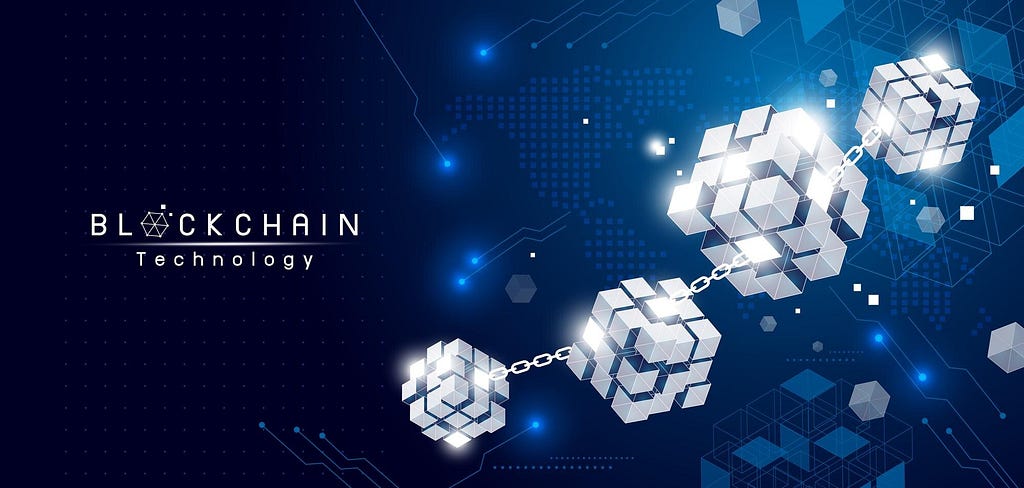
Introduction
Blockchain technology has emerged as a transformative force in the digital landscape, revolutionizing how we think about data security, transparency, and decentralized systems. Originally developed as the underlying architecture for cryptocurrencies like Bitcoin, blockchain has evolved into a versatile technology with applications spanning various industries, including finance, healthcare, supply chain management, and more. Its ability to create tamper-proof records and facilitate trustless transactions has made it a focal point for innovation in the tech world.
As the demand for blockchain solutions continues to grow, so does the need for robust development frameworks that enable developers to build efficient and scalable applications. These frameworks provide essential tools and libraries that streamline the development process, allowing for faster deployment and greater functionality. They play a crucial role in simplifying complex blockchain concepts, making it easier for developers to create decentralized applications (dApps) and smart contracts.
In this blog, we will explore the top 10 blockchain development frameworks you need to know in 2024. We will delve into their unique features, advantages, and ideal use cases, providing you with a comprehensive understanding of how these frameworks can empower your blockchain projects. Whether you are a seasoned developer or new to the blockchain space, this guide aims to equip you with the knowledge necessary to navigate the rapidly evolving world of blockchain technology frameworks.
Current Trends in Blockchain Technology (2024)
As we progress through 2024, blockchain technology continues to evolve, driven by advancements that enhance its capabilities and broaden its applications. The following trends are shaping the future of blockchain, reflecting the growing interest from both public and private sectors in leveraging this transformative technology.
Interoperability and Cross-Chain Solutions
One of the most significant trends in blockchain technology is the push for interoperability between different blockchain networks. As various blockchains operate as isolated ecosystems, the inability to communicate seamlessly limits their potential. Interoperability solutions, such as those developed by Polkadot and Cosmos, are addressing this challenge by enabling different blockchains to interact smoothly. This interconnectedness fosters a more cooperative decentralized network, enhancing scalability and opening doors for innovative cross-chain applications and decentralized finance (DeFi) solutions.
Decentralized Finance (DeFi) Evolution
Decentralized Finance (DeFi) has been at the forefront of blockchain innovation, transforming traditional financial systems by offering peer-to-peer financial services without intermediaries. In 2024, DeFi is evolving beyond basic lending and borrowing protocols to include more complex financial instruments such as decentralized derivatives, options trading, and algorithmic stablecoins. Platforms like Ethereum continue to drive this growth, allowing developers to create sophisticated DeFi applications that empower users with greater control over their assets while participating in decentralized governance processes.
NFTs Beyond Digital Art
Non-Fungible Tokens (NFTs) have gained immense popularity, particularly in the realm of digital art and collectibles. However, their utility is expanding into various sectors. In 2024, we are witnessing the tokenization of physical assets such as real estate and intellectual property. Additionally, NFTs are being utilized in gaming to represent in-game items or create unique gaming experiences. This shift towards broader applications signifies a new era of tokenized assets and decentralized markets, where ownership and authenticity can be verified on the blockchain.
Sustainability and Green Blockchain
With increasing awareness of environmental concerns associated with blockchain mining, sustainability has become a critical focus for the industry. In 2024, there is a notable shift towards energy-efficient consensus mechanisms like Proof of Stake (PoS) and Proof of Authority (PoA), which reduce carbon footprints compared to traditional Proof of Work (PoW) systems. Initiatives promoting carbon offsetting and green mining practices are gaining traction, aligning blockchain technology with global sustainability goals.
Enhanced Privacy and Security
As blockchain adoption grows across various industries, ensuring data privacy and security becomes paramount. Innovations in privacy-preserving technologies, such as zero-knowledge proofs and homomorphic encryption, are expected to advance significantly in 2024. These technologies enable secure transactions while maintaining user confidentiality, fostering trust in decentralized systems.
Government Adoption and Regulatory Clarity
Governments worldwide are increasingly recognizing the potential of blockchain technology for enhancing transparency and efficiency in public services. In 2024, we anticipate further developments in regulatory frameworks that provide clarity for blockchain projects. This regulatory clarity will facilitate broader adoption of blockchain solutions across sectors such as finance, healthcare, and supply chain management.
Blockchain for Supply Chain Transparency
Blockchain’s ability to provide immutable records makes it an ideal solution for enhancing transparency in supply chains. In 2024, businesses are leveraging blockchain technology to track products from origin to consumer seamlessly. This transparency not only improves operational efficiency but also builds consumer trust by verifying product authenticity.
Decentralized Autonomous Organizations (DAOs) and Governance
The rise of Decentralized Autonomous Organizations (DAOs) is reshaping governance models within blockchain ecosystems. DAOs enable communities to make collective decisions through smart contracts without centralized control. As more organizations adopt this model in 2024, we can expect increased participation in governance processes and a shift towards more democratic decision-making structures.
Top 10 Blockchain Development Frameworks for 2024
As the blockchain landscape continues to evolve, developers are presented with a myriad of frameworks designed to simplify and enhance the development of decentralized applications (dApps) and smart contracts. In 2024, the following ten blockchain development frameworks stand out for their unique features, versatility, and growing ecosystems.
1. Ethereum
Overview: Ethereum remains the most popular and versatile blockchain framework, enabling developers to create decentralized applications through its robust smart contract capabilities.
Key Features:
- Smart Contracts: Utilizes the Solidity programming language for complex contract creation.
- Ethereum 2.0: Enhancements aimed at improving scalability and reducing energy consumption.
- Vibrant Ecosystem: A large community and extensive resources for developers.
Use Cases: DeFi platforms, NFTs, supply chain management.
2. Binance Smart Chain (BSC)
Overview: Known for its high performance and low transaction costs, BSC is compatible with Ethereum’s ecosystem, making it easy for developers to migrate their dApps.
Key Features:
- High Throughput: Facilitates fast transactions at low fees.
- EVM Compatibility: Supports Ethereum Virtual Machine for seamless integration.
- Dual Chain Architecture: Works alongside Binance Chain for diverse application support.
Use Cases: DeFi projects, decentralized exchanges (DEXs), gaming platforms.
3. Solana
Overview: Solana is recognized for its exceptional scalability and speed, powered by its unique Proof of History (PoH) consensus mechanism.
Key Features:
- High Speed and Scalability: Processes thousands of transactions per second with minimal fees.
- Growing Ecosystem: Rapidly expanding with various projects and applications.
Use Cases: High-frequency trading applications, NFT platforms, DeFi solutions.
4. Polkadot
Overview: Polkadot aims to facilitate interoperability between multiple blockchains, allowing them to communicate and share data seamlessly.
Key Features:
- Interoperability: Enables different blockchains to work together effectively.
- Substrate Framework: Provides tools for building custom blockchains tailored to specific needs.
- Scalability with Parachains: Supports multiple parachains running in parallel.
Use Cases: Cross-chain applications, custom blockchain development, decentralized identity systems.
5. Tezos
Overview: Tezos is known for its self-amending blockchain and on-chain governance features, making it a secure platform for smart contracts.
Key Features:
- Self-Amendment Capability: Allows the protocol to evolve without hard forks.
- Formal Verification: Ensures correctness in smart contracts through mathematical proofs.
- On-Chain Governance: Stakeholders can propose and vote on upgrades directly.
Use Cases: Smart contracts, governance platforms, enterprise solutions.
6. Cardano
Overview: Cardano employs a research-driven approach focused on security, scalability, and sustainability through its layered architecture.
Key Features:
- Ouroboros Consensus Algorithm: A proof-of-stake protocol renowned for its efficiency.
- Layered Architecture: Separates the ledger of values from the smart contract layer.
- Focus on Peer-Reviewed Research: Incorporates academic insights into its development process.
Use Cases: Financial services, supply chain solutions, identity management.
7. Avalanche
Overview: Avalanche is designed for high throughput and low latency, utilizing a unique consensus mechanism that achieves rapid transaction finality.
Key Features:
- High Throughput Capacity: Capable of processing thousands of transactions per second.
- Customizable Subnets: Allows users to create tailored blockchains within the Avalanche network.
- Low Latency Transactions: Near-instant transaction finality enhances user experience.
Use Cases: DeFi platforms, NFT marketplaces, enterprise applications.
8. Hyperledger Fabric
Overview: Hyperledger Fabric is an enterprise-grade blockchain framework that offers a modular architecture suitable for business applications.
Key Features:
- Modular Design Elements: Allows customization of consensus mechanisms and privacy features.
- Permissioned Network Capabilities: Ensures that only authorized participants can access data and conduct transactions.
Use Cases: Supply chain management, healthcare solutions, financial services.
9. Quorum
Overview: Quorum is an enterprise-focused version of Ethereum that enhances privacy while maintaining compatibility with the Ethereum ecosystem.
Key Features:
- Privacy Enhancements: Offers private transactions and confidential smart contracts.
- Improved Transaction Speed: Optimized for high-speed transactions in private networks.
Use Cases: Enterprise-level applications requiring privacy and security features.
10. Fantom
Overview: Fantom is a highly scalable blockchain platform designed for DeFi applications and enterprise solutions with fast transaction speeds.
Key Features:
- Directed Acyclic Graph (DAG) Technology: Enables high throughput and low latency transactions.
- Compatibility with EVM: Allows easy migration of existing Ethereum dApps.
Use Cases: DeFi solutions, supply chain tracking, real-time data sharing applications.
These frameworks represent the forefront of blockchain technology in 2024. Each offers distinct advantages tailored to different use cases, making them essential tools for developers looking to harness the power of blockchain technology effectively. As you explore these options further, consider your project’s specific requirements to choose the framework that best aligns with your goals.
Comparative Analysis of Frameworks
Ethereum
· Key Strengths — Smart contracts, large ecosystem
· Ideal Use Cases — DeFi, NFTs, enterprise applications
Binance Smart Chain
· Key Strengths — Low fees, fast transactions
· Ideal Use Cases — DeFi projects, gaming
Solana
· Key Strengths — Scalability, speed
· Ideal Use Cases — High-frequency trading, NFTs
Polkadot
· Key Strengths — Interoperability
· Ideal Use Cases — Cross-chain applications
Tezos
· Key Strengths — Self-amendment
· Ideal Use Cases — Governance platforms
Cardano
· Key Strengths — Research-driven
· Ideal Use Cases — Financial services, identity management
Avalanche
· Key Strengths — Custom subnets
· Ideal Use Cases — DeFi platforms, enterprise solutions
Hyperledger Fabric
· Key Strengths — Enterprise focus
· Ideal Use Cases — Supply chain management
Cosmos
· Key Strengths — Interoperable ecosystems
· Ideal Use Cases — Custom blockchain solutions
Hedera Hashgraph
· Key Strengths — Fast consensus
· Ideal Use Cases — Microtransactions, enterprise apps
Challenges in Blockchain Development
Despite the transformative potential of blockchain technology, its widespread adoption faces several significant challenges. As we look toward 2024, addressing these hurdles will be crucial for unlocking the full capabilities of blockchain across various industries. Here are some of the primary challenges developers and organizations encounter in blockchain development:
Scalability
Scalability remains one of the most pressing issues for blockchain networks. Many existing platforms struggle to handle a high volume of transactions per second (TPS), which can lead to increased fees and slower processing times. For instance, during periods of high demand, networks like Ethereum have experienced congestion, making it difficult for users to execute transactions efficiently. To overcome this challenge, solutions such as layer-2 protocols (e.g., Lightning Network for Bitcoin) and sharding are being explored to enhance transaction speeds and capacity.
Security Concerns
While blockchain is often touted for its security features, vulnerabilities still exist, particularly in smart contracts and consensus protocols. Issues such as 51% attacks — where a single entity gains control over the majority of a network’s computational power — pose significant risks. Moreover, poorly written smart contracts can lead to exploits and financial losses. Continuous improvement of security measures, including robust auditing processes and best practices in smart contract development, is essential for building trust in blockchain applications.
Interoperability
Currently, many blockchain networks operate as isolated silos, making it challenging to transfer assets or data between different systems. This lack of interoperability limits collaboration and innovation across various blockchain ecosystems. Developing standards and cross-chain solutions is critical for creating a connected blockchain landscape that enables seamless interaction between different networks.
Regulatory Uncertainty
The regulatory environment surrounding blockchain technology is still evolving, leading to uncertainty for businesses looking to adopt this technology. Inconsistent regulations across jurisdictions can hinder innovation and create barriers to entry for new projects. Clear and supportive regulatory frameworks are necessary to foster responsible innovation while ensuring consumer protection and financial stability.
Energy Consumption
The environmental impact of blockchain technology, particularly those using Proof of Work (PoW) consensus mechanisms like Bitcoin, has raised significant concerns regarding energy consumption. The high energy requirements associated with mining operations contribute to carbon emissions and environmental degradation. Transitioning to more energy-efficient consensus mechanisms, such as Proof of Stake (PoS), and utilizing renewable energy sources will be crucial for the long-term sustainability of blockchain technology.
Lack of Talent
The demand for skilled professionals in blockchain development far exceeds the current talent pool. This skills gap poses a challenge for organizations seeking to implement blockchain solutions effectively. Educational initiatives and training programs are essential for equipping the workforce with the necessary expertise to develop and maintain blockchain technologies.
Public Perception
Public perception of blockchain technology is often marred by concerns over security breaches, scams, and environmental impacts. These perceptions can hinder widespread adoption and acceptance of blockchain solutions. Addressing these issues through transparency, education, and responsible development practices is vital for building trust among potential users and stakeholders.
Balancing Decentralization with Efficiency
Achieving a balance between decentralization — a core principle of blockchain — and efficiency remains a challenge. While decentralization enhances security and trustlessness, it can sometimes limit scalability and performance. Finding innovative solutions that maintain decentralization while enhancing efficiency will be key to advancing blockchain technology.
Ethical Considerations
As with any emerging technology, ethical concerns surrounding data privacy, algorithmic bias, and potential misuse for illegal activities must be addressed. Developers must prioritize responsible development practices that consider the ethical implications of their work to ensure that blockchain technology is used positively.
Global Adoption
Achieving widespread adoption across different regions and cultures presents a formidable challenge. Variations in technological infrastructure, regulatory environments, and cultural attitudes toward digital currencies can impede global acceptance of blockchain solutions. Tailoring approaches that consider these differences will be essential for fostering global adoption.
Conclusion
As we have explored, the world of blockchain development frameworks is rapidly evolving, with each framework offering unique features and capabilities tailored to specific use cases. By understanding the strengths and limitations of these frameworks, developers can make informed decisions when selecting the most appropriate solution for their blockchain projects.
However, the success of blockchain technology ultimately depends on the ability to address the challenges outlined in this blog. By prioritizing scalability, security, interoperability, and sustainability, the blockchain community can drive widespread adoption and unlock the full potential of this transformative technology.
As we look to the future, it is clear that blockchain development frameworks will continue to play a crucial role in shaping the digital landscape. By staying informed about the latest trends and advancements in this space, developers can position themselves at the forefront of innovation, driving the future of blockchain technology.








